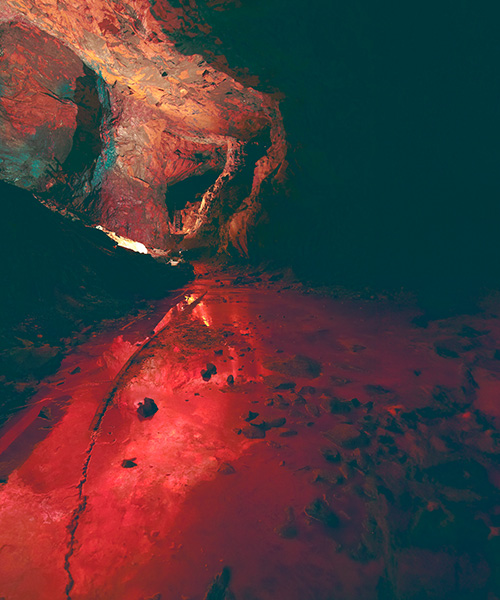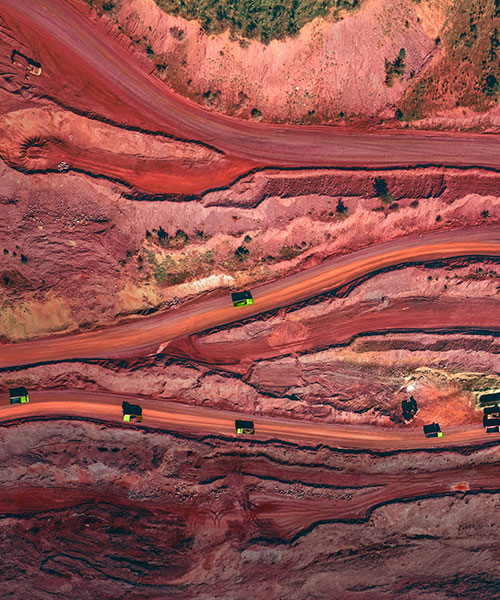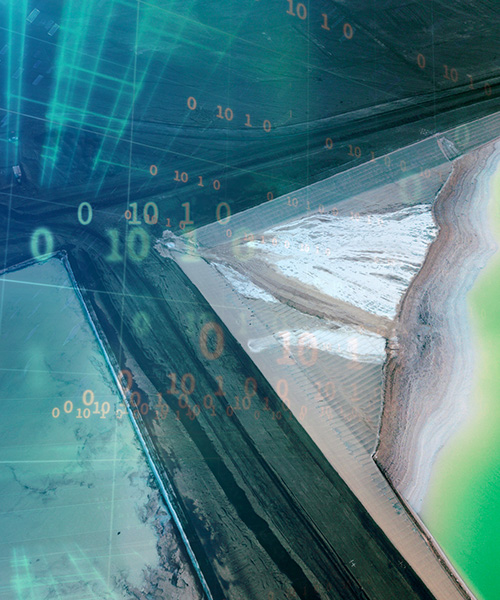February 04, 2021 • 3 min read
Using technology to increase metal recovery at mine sites
How we’re using magnetic resonance technology to help miners reduce their environmental footprint
Did you know, in the US alone, mineral extraction consumes around four billion gallons of water a day? That’s the average water use of 40,000 households per day.
Extracting minerals and metals from ore uses a lot of water and energy. It also produces a lot of waste, which needs to be managed properly. That’s why miners are diligently working to find more efficient ways to process ore that consumes less power and water and produces less waste. However, this is becoming more difficult with 11 out of the top 15 copper producers facing significant head grade declines in the last 10 years.
“Mining ore deposits with a lower grade is costlier and more energy intensive because it involves moving and processing large quantities of ore that contains a lot of waste,” explains Nick Bell, Global Sector Lead for Mining, minerals and metals at Worley. “But if we can selectively remove the waste or lower grade material before it enters the processing plant, it can bring significant cost and revenue advantages while minimizing environmental factors to miners.”
A leap forward in sustainability
Up to now, many technologies have been successful in identifying and sorting high grade material from waste. However, many of these technologies were developed decades ago. It is notoriously difficult to produce reliable measurements consistently, which results in frequent shutdowns for recalibration. And particle sorting technologies can only treat relatively small amounts of ore at a time as material has to be carefully prepared and presented to the sorters.
Recognizing this, Australia’s Commonwealth Scientific and Industrial Research Organization (CSIRO) developed an analyzer for reliable high-throughput ore sensing and sorting, using magnetic resonance technology. To bring this technology to market, we created the joint venture, NextOre, with RCF Ambrian and the CSIRO.
“Compared to other sorting analyzers that can only detect mineral particles at or near the surface of ore, NextOre’s magnetic resonance technology can evaluate and sort much coarser ore with industry-leading accuracy and speed,” says Bell. “This brings significant efficiency improvements to miners, allowing them to take a leap forward in sustainability, reduce energy consumption and decrease unit costs.”
Ore sorting that takes the MR out of MRI
NextOre’s analyzer rapidly identifies ore grades by transmitting short bursts of radio waves into batches of ore. The radio signal is tuned to the resonant frequency of the target mineral, producing accurate grade measurements in real time.
“Much like a medical MRI sees into a human body, NextOre’s analyzer sees into the ore to detect how much of the target mineral or a valuable metal is present,” explains Chris Beal, CEO at NextOre. “Then, the good ore is automatically sorted from the waste rock before it enters the plant. This significantly reduces the amount of ore that needs to be processed. It can also extend the life of current mines or get undeveloped, low-grade mines into production.”
Delivering results
In 2019, NextOre worked with TSX-listed Capstone Mining to install a bulk ore sorting plant at their mine in Mexico. Despite high operational mixing, the program demonstrated that the amount of copper metal recovered could be reliably increased by as much as eight percent without any change to the amount of material mined.
NextOre confirmed that miners can choose what grade of ore is worth processing – and what’s best to discard. Ultimately, achieving a higher grade of ore means higher metal recovery and cheaper operational costs.
More recently, NextOre won the Australian Technologies Competition 2020 Mining Technologies Award. The Australian Technologies Competition seeks to identify and accelerate Australian technology ‘scaleups’ with the greatest global potential.
“Ore grades across the world are gradually decreasing in quality, and miners need to produce more from less,” says Bell. “NextOre allows miners to be selective of the material they take into downstream processing, and what they don’t, helping them accelerate towards their sustainability targets by deploying innovative technology. If the mining industry is to rise to the challenge of meeting the increased demand for energy transition metals, high capacity ore sorting can play a significant role.”



